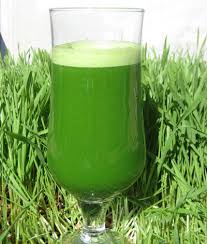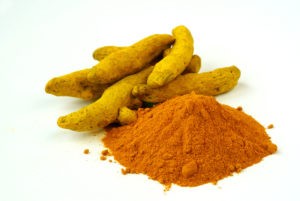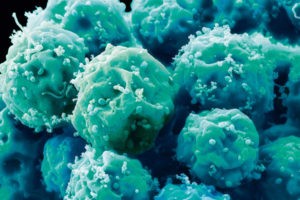
Recently Diagnosed or Relapsed? Stop Looking For a Miracle Cure, and Use Evidence-Based Therapies To Enhance Your Treatment and Prolong Your Remission
Multiple Myeloma an incurable disease, but I have spent the last 25 years in remission using a blend of conventional oncology and evidence-based nutrition, supplementation, and lifestyle therapies from peer-reviewed studies that your oncologist probably hasn't told you about.
Click the orange button to the right to learn more about what you can start doing today.
- You are here:
- Home »
- Blog »
- Multiple Myeloma »
- Multiple Myeloma Chemotherapy- Preventing MM Relapse, Curing MM?
Multiple Myeloma Chemotherapy- Preventing MM Relapse, Curing MM?

Yet another blog post about curcumin as multiple myeloma chemotherapy!? The difference here is establishing curcumin’s ability to kill MM stem cells.
If you’ve been diagnosed with an incurable blood cancer, multiple myeloma, what should the goal of your multiple myeloma chemotherapy be? To put you into remission or to eliminate your multiple myeloma forever aka cure you?
My definition of multiple myeloma chemotherapy is any form of chemical therapy used to kill MM. In this case then, curcumin is a chemical therapy.
MM is considered to be incurable because all MM survivors always relapse repeatedly eventually facing multi-drug resistance (MDR), end-stage MM and death.
Conventional oncology has gotten pretty good at putting newly diagnosed MM patients into remission. Yes, everyone wants as complete a remission as possible (MRD-, MRD+, CR, even VGPR), but the fact remains, MM is often diagnosed at an advanced stage (stage II or III) and therefore the patient’s MM must be stabilized.
I placed an image of cancer stem cells next to my discussion of remission because we focus on killing our mature MM cells and we give little thought to our MM relapsing aka re-growing from mm stem cells.
Symptoms such as kidney or bone damage must also be immediately addressed. Curcumin is not fast enough in it’s anti-MM action to address the majority of newly diagnosed MM patients.
So conventional MM oncologists have become accomplished at stabilizing newly diagnosed MM patients, as complicated as this can be.
The failure of conventional oncology, in my opinion anyway, occurs when the MM survivor relapses. According to the study linked below, giving the MM patient more conventional, toxic, MM chemotherapy or radiation, simply makes the MM more aggressive. If your MM becomes more aggressive, you simply speed your way to multi-drug resistance, end-stage MM and death that much faster.
The solution then, again, in my opinion, is to employ as little conventional, toxic MM chemotherapy and radiation as possible in your effort to stabilize your MM. Walking the fine line between conventional therapies and non-conventional therapies (like curcumin) is a challenge to be sure.
But once you’ve stabilized your multiple myeloma, my experience has been to employ every evidence-based, non-toxic, non-conventional therapy possible.
- Curcumin (anti-angiogenic, anti-inflammatory supplementation)
- Exercise
- Anti-angiogenic Nutrition
- Whole-body Hyperthermia, etc.
All are therapies shown to either/or kill myeloma or boost the immune system. Both are important after a MM diagnosis and MM induction therapy.
Keep in mind that there are a number of non-toxic MM chemotherapy regimens such as curcumin that have been shown to enhance the anti-MM action of conventional MM chemotherapy regimens.
For the record, I have been supplementing curcumin and other nutritional supplements for years. In all that time I have remained in complete remission from my MM while I have not had a treatment-related secondary cancer.
To learn more about managing your multiple myeloma, scroll down the page, post a question or comment and I will reply to you ASAP
Hang in there,
David Emerson
- MM Survivor
- MM Coach
- Director PeopleBeatingCancer
Recommended Reading:
- Multiple Myeloma Chemotherapy – Antioxidants Enhance Action
- Cancer Coaching Testimonials- PeopleBeatingCancer
- Multiple Myeloma Side Effects- Prevent, Heal Chemobrain
Study: Turmeric Safely Kills Cancer Stem Cells
“A groundbreaking new study published in the journal Anticancer Research reveals that one of the world’s most extensively researched and promising natural compounds for cancer treatment: the primary polyphenol in the ancient spice turmeric known as curcumin, has the ability to selectively target cancer stem cells, which are at the root of cancer malignancy, while having little to no toxicity on normal stem cells, which are essential for tissue regeneration and longevity…
Because CSCs are resistant to chemotherapy, radiation, and may even be provoked towards increased invasiveness through surgical intervention, they are widely believed to be responsible for tumor recurrence and the failure of conventional treatment…
Curcumin And Normal Stem Cells
Normal stem cells (NSCs) are essential for health because they are responsible for differentiating into normal cells that are needed to replace damaged or sick ones. If curcumin were to kill normal cells, like radiation and chemotherapy, it would not provide a compelling alternative to these treatments…
Concluding Remarks
This study adds growing support to the idea that safe, time-tested, natural substances are superior to synthetic ones. Given the evidence that a safe and effective alternative may already exist, chemotherapy, radiation and even surgery may no longer be justified as the first-line standard of care for cancer treatment. In fact, a significant body of evidence now implicates these treatments in worsening prognosis, and in some cases driving cancer stem cell enrichment in tumors.
Radiotherapy, for instance, has been found to induce cancer stem cell like properties in breast cancer cells, essentially increasing their malignancy and tumoriogenicity by 30 fold.
This is hardly progress when one considers the role that CSCs play, especially in contributing to post-treatment secondary cancers.
Turmeric and its components, of course, are not FDA approved drugs, and by definition the FDA will not allow an unapproved substance, natural or synthetic, to prevent, treat, diagnosis or cure a disease. This means that you will not be seeing it offered by an oncologist as an alternative to chemotherapy or radiation any time soon.”
Curcumin and Cancer Stem Cells: Curcumin Ηas Asymmetrical Effects on Cancer and Normal Stem Cells
“The use of cytotoxic therapies remains the standard treatment for patients with metastatic cancer. The efficacy of these treatments is limited, with recurrence common.
According to the cancer stem cell paradigm, cancers contain distinct subpopulations of cancer stem/progenitor cells (CSCs) characterized by self-renewal mechanisms and resistance to conventional treatments (1-3). When CSCs are transferred to an immune-deficient mouse, these cells can reconstitute the original cancer in the animal (4-6). Even a small number of stem cells (as few as 100) can be effective in bringing about the transplantation (7). However, tumors depleted of stem cells do not grow as xenografts (8).
These CSCs have been shown to be resistant to chemotherapy (9), radiation (10) and hormone therapy (11). For this reason, metastases from solid tumors, in particular, will re-appear even after initially successful treatments and prolonged periods of complete remission.
Further, an unintended consequence of induced cancer cell death is the release of inflammatory cytokines, which can stimulate replication of CSCs (12-14).
The percentage of CSCs in the cancer has been shown to increase in patients receiving neoadjuvant chemotherapy (9, 15, 16)


